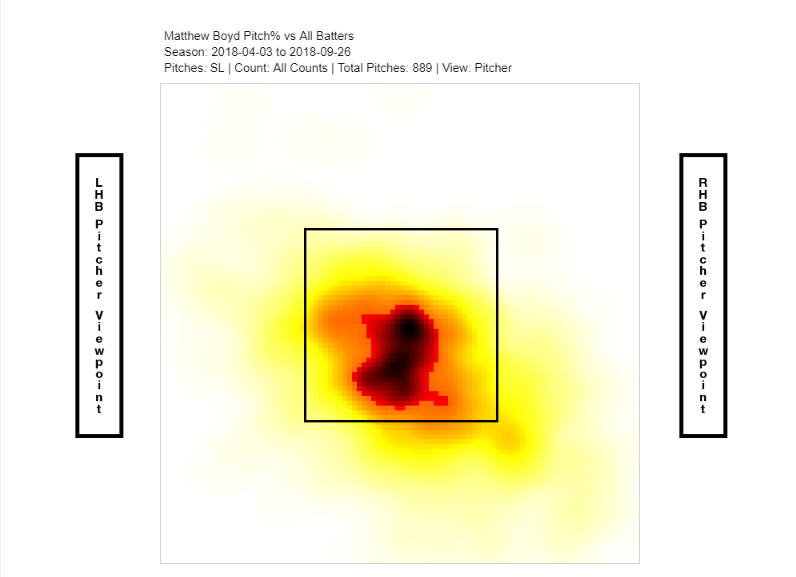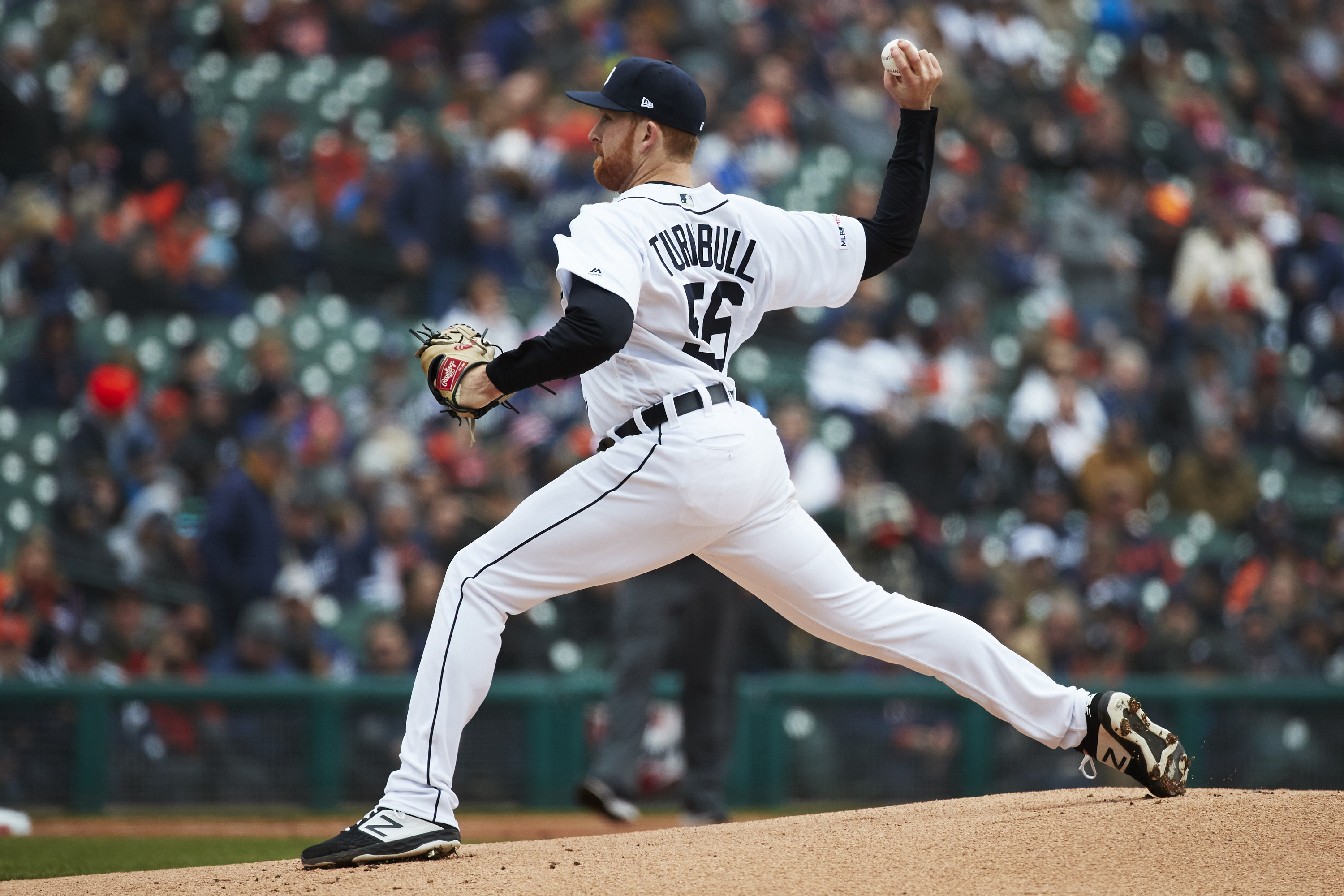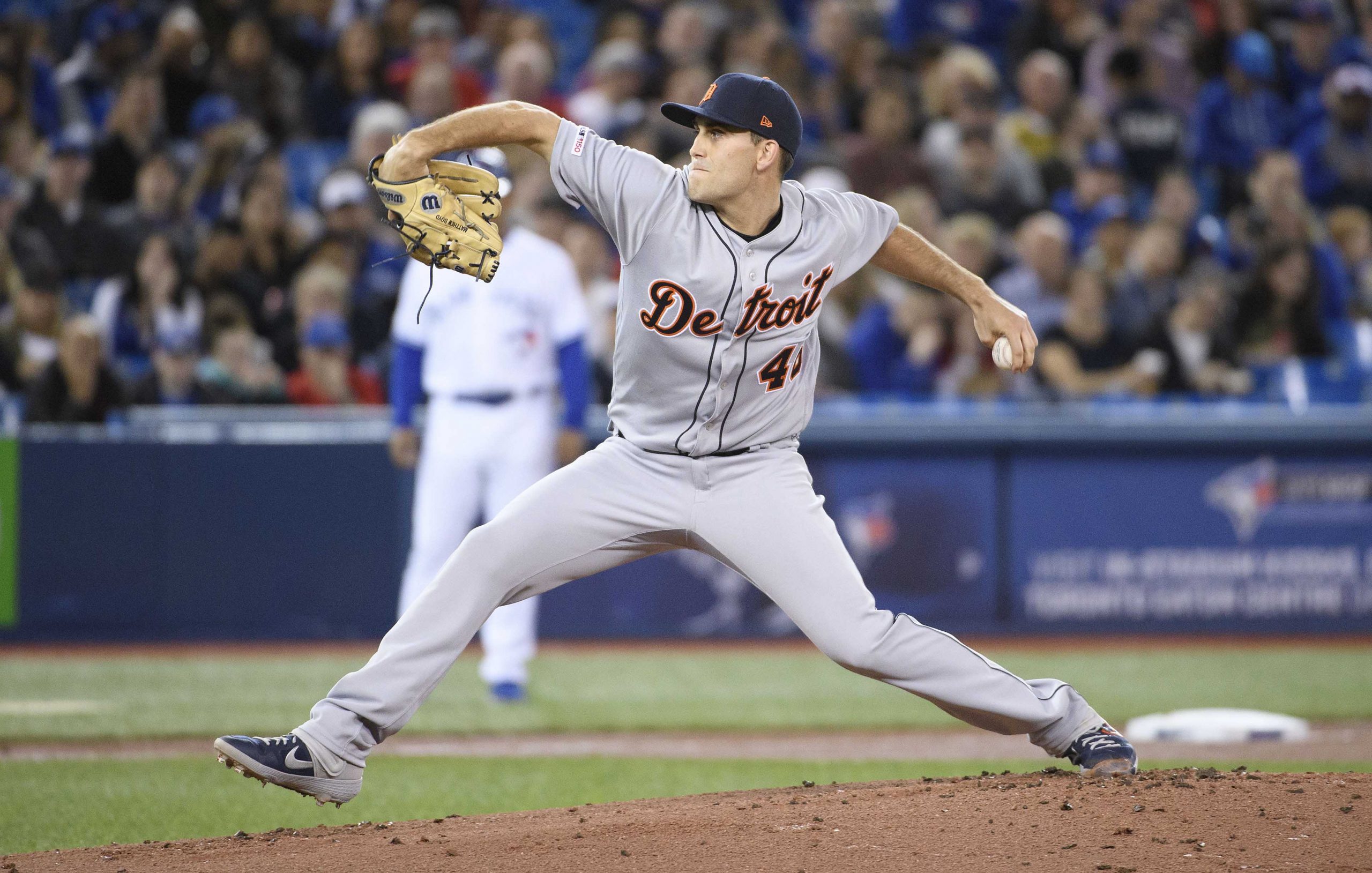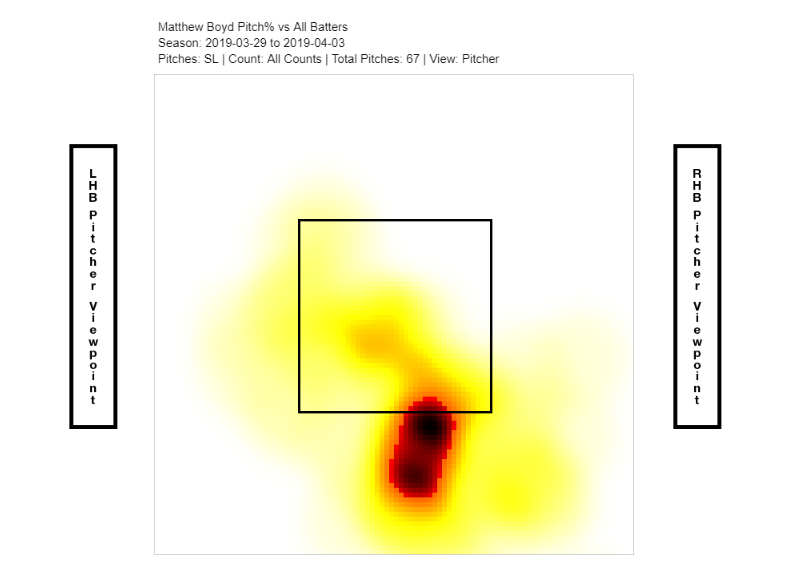Boyd certainly has been one of the more interesting pitchers in all of baseball. A year since purposely throwing softer (which didn’t particularly help, as he had a 4.72 xFIP), Boyd is back to averaging 91/92 mph on his fastball, and he’s been one of the best pitchers in all of baseball. Despite a BABIP against of nearly .500, his ERA is only 3.18. Adjusting for that defensive luck leaves Boyd with the 2nd best FIP, only Jacob deGrom has been better. Boyd has also interestingly produced the 8th lowest percentage of groundballs, yet hasn’t allowed a home run. That will probably bite him back later, but for now, everything seems to be working. Unlike what some may have expected Anderson to help, Boyd hasn’t allowed fewer free baserunners and actually has thrown 9% fewer balls in the zone compared to the rest of his career.
Despite never previously being a high strikeout guy, Boyd ranks 3rd in the majors in K% through 2 games, and the 28-year-old is 2nd in the MLB with a SwStr% over 20%, nearly double what he had last season. He has legitimately been one of the best pitchers in baseball a week into the season, but what is important is whether or not he can continue to be reliable.
Boyd has changed his pitch usage a bit, dropping his sinker in favor of throwing a four-seamer more often, and just about dropping his changeup in favor of another increase in slider usage. This has partially led to about 70% of swings outside of the strike zone against him whiffing at the ball, nearly double the league average. His Z-Contact% has also dropped about 7%. Given his sinker accounted for a lot of the contact made against in the zone, that change has likely contributed some.

Boyd has also seen more horizontal and vertical movement on both his slider and curveball so far this season, with a 2.2-inch increase in total movement on his slider and curveball. Maybe the most significant change is Boyd’s location of his slider, which has proved to be one of his best pitches this season. Even as an older pitcher, there was still hope he could breakout because of his impressive breaking balls, and by hanging less in the zone, Boyd has gotten more whiffs. Chances are Boyd will not win the Cy Young, but the changes that have largely gone against “pitching to contact” that Anderson’s staffs had previously done have helped Boyd these first 2 starts.
Ever since signing with Detroit from Washington, Zimmermann has largely been a disappointment. There’s some belief to the notion that Zimmermann would not still be in the rotation if the Tigers were not hooked onto his large contract. Despite a lack of promise for 2019, Zimmermann kicked off the season by putting the Blue Jays on no-hitter watch (but who hasn’t, really) and currently has a 0.66 ERA with a 1.75 FIP in 13.2 innings. Unlike past seasons, Zimmermann’s strength has been preventing the long ball, rather than being a detriment, even though he’s allowed over 50% of batted balls in the air. He’s also impressed by only walking 1 batter through 2 games, and by allowing a paltry 21.1 Hard Hit%.
Even with dropping his fastball usage to less than 40%, Zimmermann has thrown more than 3% of balls in the zone than league average. Even with the changes in pitch usage and lack of walks, it seems unlikely that Zimmermann keeps up this start, or is even average this season. He is producing more whiffs this season, but only at an average level and isn’t really missing bats in the zone. The only pitch that has missed more bats in 2019 compared to 2018 is his curveball, which he has struggled to throw in the zone when necessary. The home runs will likely come back at some point.

Turnbull is different than Boyd and Zimmermann in that he is still a prospect. Even as a prospect, Turnbull is 26, had a 4.47 ERA while spending most of 2018 in AA. and struggled in his short late-season stint in the MLB. He has never had spectacular prospect reports, yet he’s notably opening eyes this April. Turnbull has started the season with a 4.09 ERA, 2.81 FIP, and 3.31 xFIP. He has a 23.4 K-BB%, and like the others, has produced more flyballs than groundballs.
Turnbull’s biggest change in pitch usage has been going from 50% sinkers to 10% sinkers from 2018 to 2019, and vice versa with his four-seamer. He’s also begun to throw his slider more than his curveball. He still doesn’t have a changeup, and still walks a decent amount of batters, but Turnbull is producing whiffs at above-average levels early in the season. His slider has missed bats at an elite rate, and his fastball has been above average as well. Similar to the other 2, Turnbull has thrown a high percentage (61.7%) of fastballs in the zone, compared to 26.5% of sliders.
Overall, the Tigers start likely won’t continue into September, but there clearly seems to be similar changes across the entire organization in pitching philosophy, which has mirrored more modern approaches, in which breaking balls are used more often and thrown below the zone more often, while fastballs are instead used to set up the breaking balls.
Add The Sports Daily to your Google News Feed!

